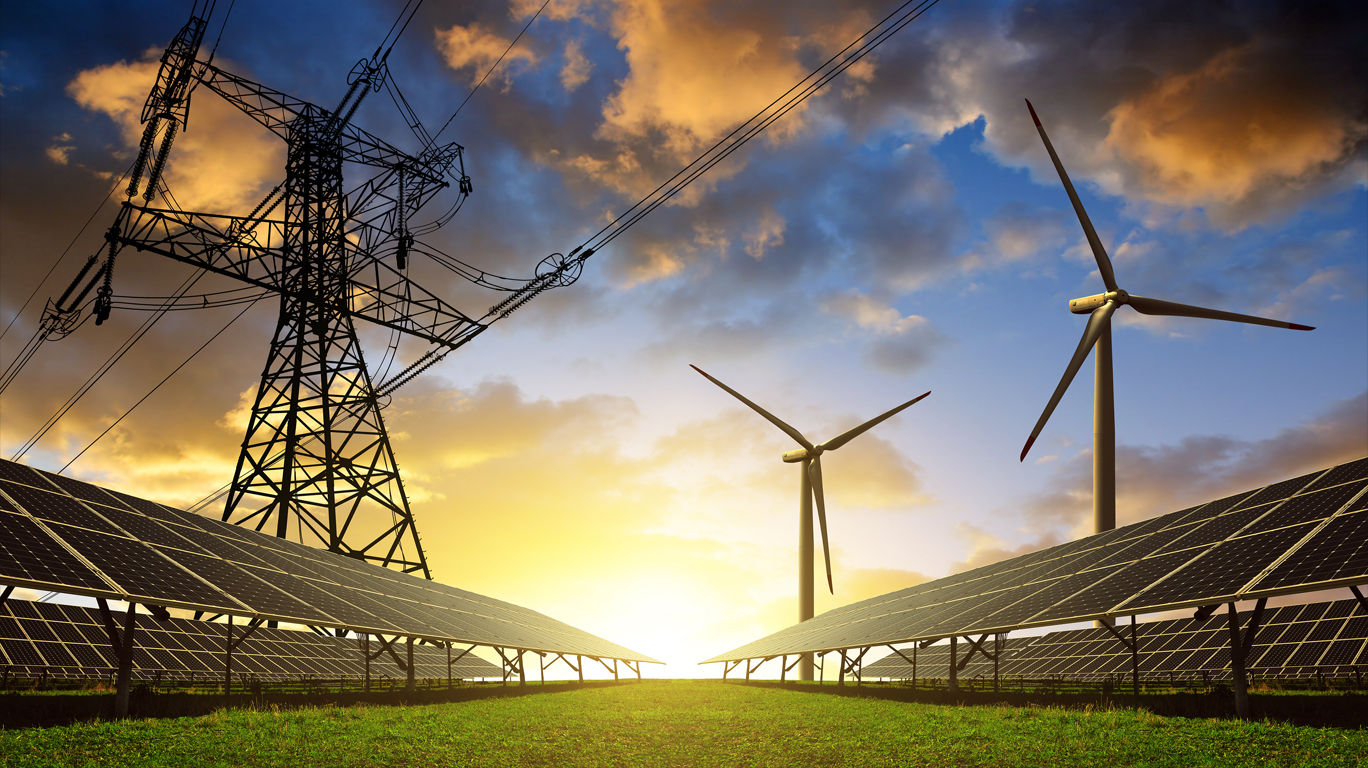Energy - Civil Nuclear Power
What is Nuclear Energy?
Nuclear energy typically refers to process of harnessing induced fission in uranium atoms to generate energy and heat from which steam can be derived to drive a turbine and generate electricity. This process does not produce any greenhouse gases - avoiding a drawback of current fossil fuel-based generation technology. Nuclear energy is viewed as an abundant and long-term source, as known uranium deposits can sustain current nuclear power use for another 200 years according to the Nuclear Energy Agency (NEA).
Benefits of Nuclear Energy
Nuclear energy is one of the most efficient sources of energy currently available. According to the Nuclear Energy Institute (NEI), the United States avoided more than 471 million metric tons of carbon dioxide emissions in 2020 alone, which was one of the lowest recorded years to date. The uses of nuclear energy extend far beyond carbon-free electricity. Nuclear energy powers space exploration, sterilizes medical equipment, provides potable water through desalination, supplies radioisotopes for cancer treatment and much more.
U.S. Civil Nuclear Sub-Sectors
Advisory and Legal Support Services: Companies that provide advisory and consulting services that address the development of legal and regulatory regimes, licensing support, siting, environmental impact analyses, legal advice, and tender writing and development. Standards development and trade association activities are also included within this subsector.
Design, Construction and Operation: Companies responsible for technology design and engineering, procurement, project management, site preparation, plant construction, and plant operation and maintenance. This subsector addresses all activities in the engineering, procurement and construction (EPC) phase of a nuclear power plant project and also covers utilities that operate plants and companies that provide plant maintenance and repair.
Components: Participants in this sector are manufacturers that seek commercial opportunities throughout a nuclear power plant’s lifecycle, including the supply of parts required for operation and maintenance, uprates and upgrades. We delineate this subsector to reflect commercial opportunities for component manufacturers independent of Nuclear Steam Supply System (NSSS) providers.
Fuels: The fuels subsector includes all aspects of the nuclear fuel cycle, including mining and milling uranium, enrichment, conversion, fabrication of assemblies, refueling, transportation of fuel and fuel storage.
Back-End Services: Companies in this subsector provide services related to nuclear power plant decommissioning and used fuel management, including waste management and removal, remediation, used fuel management, interim storage and transportation, geologic disposal and reprocessing, and recycling of plant byproducts.
Key Trends – U.S. and Global Nuclear Industry
The U.S. civil nuclear industry has unique strengths and a longstanding history of leadership in the global industry yet also faces contemporary challenges that make it difficult to compete internationally today. As of July 2021, the United States has 93 operating nuclear power reactors at 57 sites in 29 U.S. states (a number have shut down recently or are planned to shut down). This is down from a high of over 110 in the mid-2000s. The United States operates the largest nuclear reactor fleet in the world, producing 789.92 TWh of energy in 2021.
Beginning in the late 1990s, U.S. government policy and funding decisions encouraged the development of greater civil nuclear capacity. This led to the United States to be the largest gross producer of nuclear energy. The United States boasts significant private sector participation in the civil nuclear sector, and there is a gradually growing positive public perception towards nuclear energy (this same trend is not demonstrated in every country). According to the latest Bisconti Research poll conducted in June 2020, 60% of Americans favor nuclear energy (up from their identically-worded 1983 poll that yielded 49% favorability). While U.S. government commitment to nuclear power continues, new reactors builds have significantly slowed in the United States.
At present, the United States is supporting the development of small modular reactors (SMRs) and advanced reactors to promote more cost-effective and deployable alternatives to the current U.S. nuclear fleet of large conventional reactors.
The global civil nuclear sector refers to the 37 countries with operating nuclear power plants or nuclear power plants under construction, as well as countries that have indicated an interest in developing a civil nuclear program. Globally, as of July 2021, there are 443 operating reactors with 51 under construction.
Upcoming Events
- The Nuclear Energy Institute, U.S. Nuclear Industry Council, and American Nuclear Society all have information on upcoming nuclear energy conferences and events.
Resources
- ITA Civil Nuclear Energy Top Markets Report – ITA report that discusses the status of the U.S. and global civil nuclear industry and ranks countries in terms of their readiness for nuclear energy and openness to U.S. civil nuclear exports.
- Civil Nuclear Trade Advisory Committee (CINTAC) – a U.S. Department of Commerce industry advisory committee to the Secretary of Commerce on the development and administration of programs to expand U.S. exports of civil nuclear goods and services. The CINTAC webpage contains CINTAC meeting minutes and CINTAC recommendations.
- IAEA Power Reactor Information System (PRIS) – a comprehensive database focusing on nuclear power plants worldwide. PRIS contains information on power reactors in operation, under construction, or those being decommissioned.
- World Nuclear Association (WNA) Information Library – facts and figures on nuclear energy, including country profiles, information on the nuclear fuel cycle, nuclear safety and security, and current and future generation.
Key Resources for U.S. Exporters
This 2017 report ranks 151 markets based on export potential for U.S. oil and gas equipment through 2020 in six strategic markets and three regions with additional information on U.S. crude oil and LNG exports.
This Top Markets Report provides analysis on key trends, areas of opportunity, and important challenges that exporters need to know in order to compete effectively in foreign markets.
ITA’s 2017 Civil Nuclear Energy Top Markets Report ranks 50 countries in terms of their readiness for nuclear energy and openness to U.S. civil nuclear exports.
The 2018 Smart Grid Top Markets Report ranks 56 international markets in terms of growth potential for the U.S. smart grid industry.


